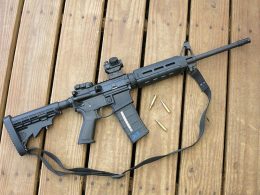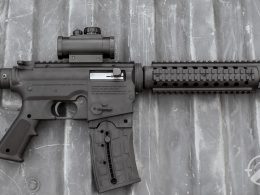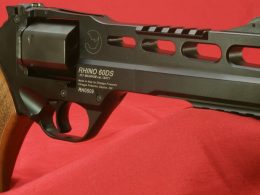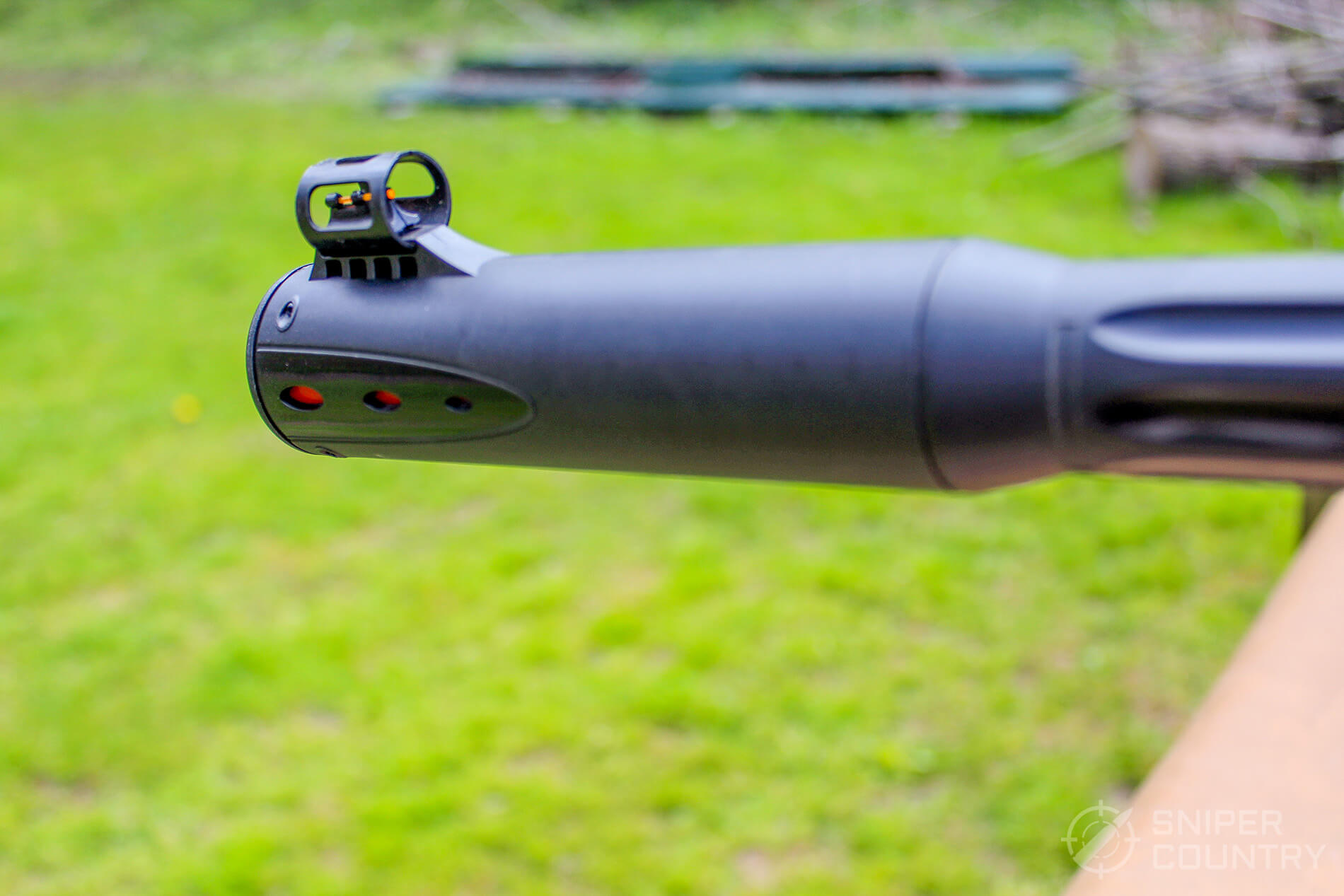Introduction
Henry. The name sort of says it all, eh? From the brand’s beginnings in 1860 to today, Henry has earned a reputation for building reliable, stout guns that exhibit excellent workmanship, material, fit and finish. I mean… just look at the Henry Big Boy rifle above. Top-grain American walnut stock, highly-polished brass receiver, deep-blued and polished octagonal barrel. What’s not to like?
I was recently given the opportunity to review this gun, a Henry Big Boy in .44 Magnum, model number H006. Naturally, I jumped at the chance. As many of you may remember, I get my T&E guns sent through my friend Duane’s gun store. Since I do his website inventory, I am privy to almost every gun that crosses his threshold. I had paid particular attention to the Henrys that he would sell, admiring them from afar since they were definitely out of my price range. This is one case, to be sure, where you get what you pay for.
I’d always been impressed with the materials and finishes they used, from deeply-blued barrels and receivers to the very shiny brass receivers on the Big Boy guns. Also, you could tell that the wood used was top quality walnut, not a generic looking wood like beech. Even such inconsequential parts like the barrel band was made right and polished until you could see yourself in it.
A brief history of Henry Repeating Arms
Henry Repeating Arms got its start in 1860. Benjamin Tyler Henry designed and patented the first successful lever action rifle in that year. As you’ll know, the Civil War was raging across the land. It wasn’t long before his rifle made its way into the hands of Union soldiers, in particular those from Kentucky, Illinois, Missouri and Indiana.
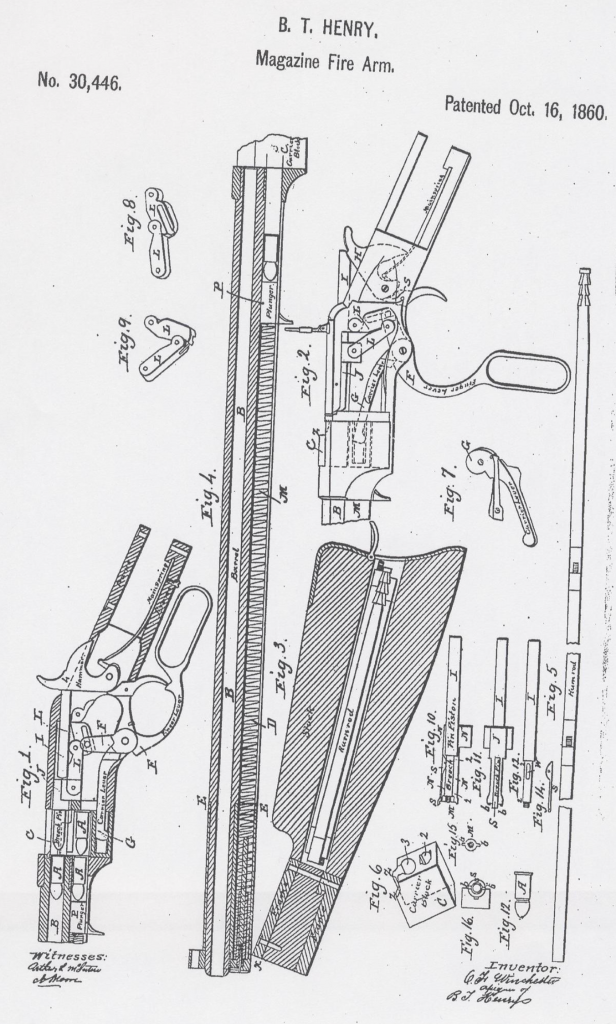
“Made In America Or Not Made At All.â€
The modern iteration of the company began in 1996. That’s when Louis Imperato and his son Anthony Imperato started the present-day company in Brooklyn, New York.
Henry Repeating Arms is named for Benjamin Tyler Henry, the inventor who patented the first repeating rifle in 1860, known as the Henry rifle. There is no connection with Benjamin Tyler Henry or to the New Haven Arms Company who sold the original Henry rifle from 1862 to 1864. Anthony Imperato secured the trademark to the Henry name in 1996.
Even though the two Henrys are not related, the tradition of top-quality rifles and shotguns with that name engraved on them continues. The modern company makes 131 different models, with sub variations, of rifles and shotguns. That’s a ton of guns. They are also big into making guns for charitable causes – I remember seeing a box come into Duane’s shop that held three Henry rifles that he couldn’t sell. They were for charitable fund-raisers for conservation and related causes.
Manufacturing for the U.S. Air Force
Something interesting that I found as I perused the Henry website is that they are now the makers of the AR-7 survival rifle that ArmaLite developed in 1959 for the U.S. Air Force. Pilots and crew members could take the gun apart and carry it, and ammo, in a special bag that stored in the plane and was handy to grab in the eventuality that it was needed. Henry also sells that bag. It was quite popular, if I remember right. Even the Israelis adopted a modified version of it in the 1980s.
BONUS OFFER: Get your free shooting range targets to print at home!
Get your free targets to print at home!
Why Buy a Henry Rifle?
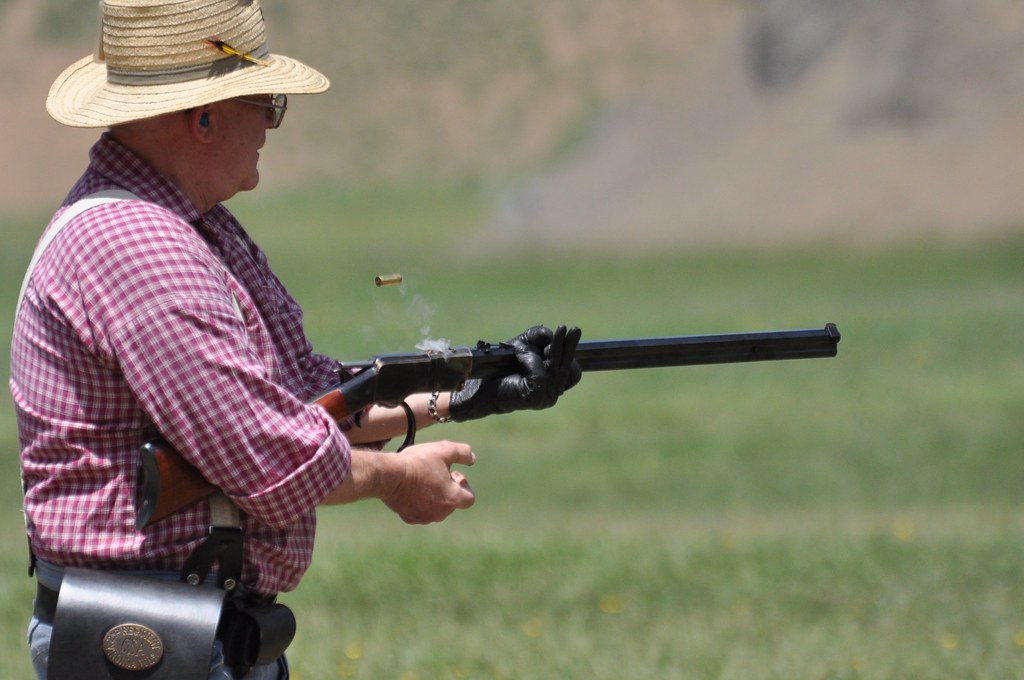
Why would you buy a Henry lever action rifle when there are others out there on the market that do pretty much the same job but cost less? Well, I guess the old smart-aleck answer might be “if I have to explain it to ya, ya wouldn’t understand  Realistically, why spend the extra bucks on a rifle that, to put it charitably, is not exactly a tactical self-defense weapon and therefore has little to no use according to some shooters? Because a Henry is built like no other lever gun that I’ve seen.
Top American gunmaking
Headquartered and made in the U.S. (HQ is in Bayonne, New Jersey and the factory is in Rice Lake, Wisconsin – we have friends not far from there. It’s a nice area), for some shooters that’s reason enough. As I mentioned elsewhere in this review, I owned a Rossi lever action in .45 Colt and it was a nice gun. I also recently reviewed the Rossi R92 in .357, which may interest you.
About 35 or 40 years ago, I briefly owned a Winchester 94 in .30-30. I lived in a city at the time and really had no use for a deer rifle – this was in my pre-deer-hunting phase of life. But, it was a Winchester (at least in name). It was well-built, and looked enough like a “John Wayne gun†that I was happy but it had no practical value for me.
The Rossi and the Winchester were very decent, but each was built with some shortcuts taken that Henrys don’t have. The Henry Big Boy that’s the subject of this review is the best-built lever gun I’ve ever handled, and I’ve had more than a few pass from my hands over the years that belonged to friends or gun shops. The Italian copies are decent guns as well, but there’s just nothing like a Henry.
Why is There Nothing Like a Henry?
When you pick a Henry up for the first time, you are struck with how “solid†it feels. From the Henry Big Boy and its over-8-pound heft to the fine-grained stock, you know you have something special in your hands. Sometimes a high price tag doesn’t necessarily translate into a quality item, but that is not the case here.
A word about the price… the Henry Big Boy is not out of line with other lever guns. The Rossi comes in at a bit over $800 and the Uberti goes for over $1500. I have seen Savage 99s and Marlin 336s and 1895s go for not a whole lot less than what a Henry costs. You can find lesser-expensive lever guns, but I’m not sure you would be satisfied if you appreciate top-notch workmanship and materials.
Other popular lever actions, as just mentioned, are made by Winchester, Savage and Marlin. Again, there is nothing at all wrong with these guns but the Henry is built differently – it’s beefier, the fit and finish are truly great and there are no extraneous machining marks (that I could find) anywhere on the gun. Its octagonal, deeply-blued barrel just sets it off, and the excellent walnut used in the stock and forend just stands out.
To sum up, you get what you pay for and with a Henry, you get a lot.
Popular Articles
Henry Big Boy .44 Magnum specifications
| Model: | H006 Big Boy |
| Caliber: | .44 Magnum/Special (.357 Magnum/.38 Special and .45 Colt also available) |
| Barrel Length: | 20" |
| Barrel Type: | Octagon Blued Steel |
| Rate of Twist: | 1:20 |
| Overall Length: | 38.5" |
| Weight: | 8.68 lbs. (8 lbs., 10.8 oz.) |
| Receiver Finish: | Polished Hardened Brass |
| Rear Sight: | Fully Adj. Semi-Buckhorn w/ Diamond Insert |
| Front Sight: | Brass Bead |
| Scopeability: | Drilled and Tapped |
| Scope Mount: | TypeBB-RSM |
| Stock Material: | American Walnut |
| Buttplate/Pad: | Brass |
| Length of Pull: | 14" |
| Safety: | Transfer Bar |
| Best Uses: | Target/Hunting/Collector |
| MSRP: | $1001 |
| “Real-World†Price: | $850 - $880 |
Let’s go ahead and look at some photos I took…


Rifle, right and left
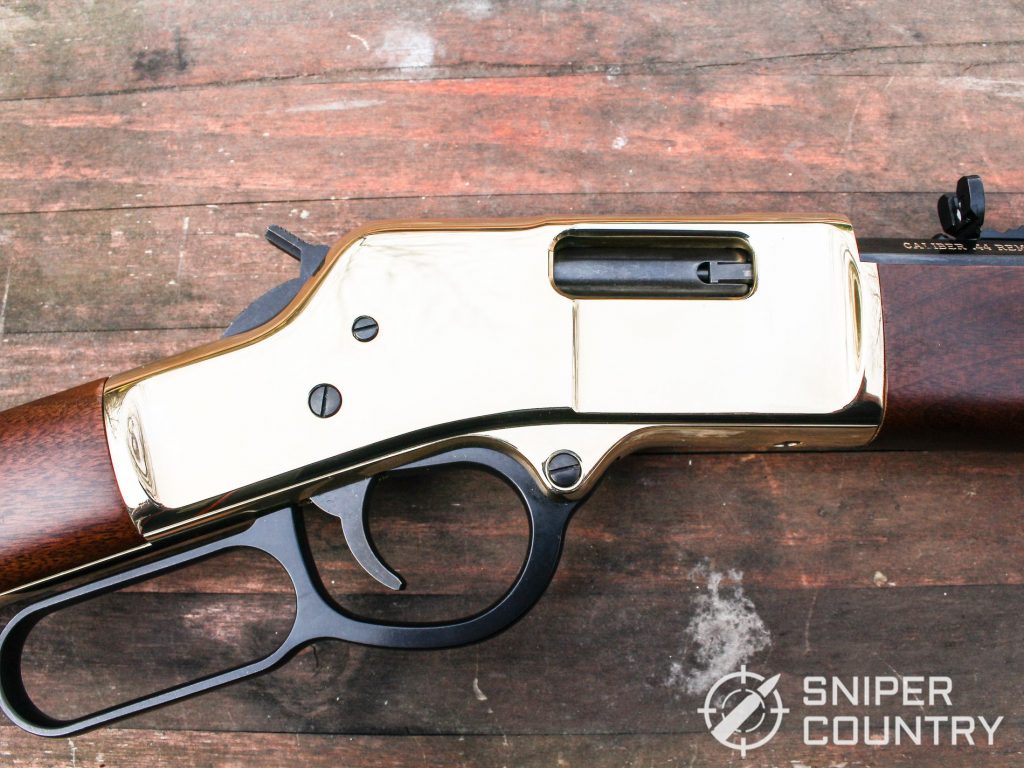
Receiver up close…
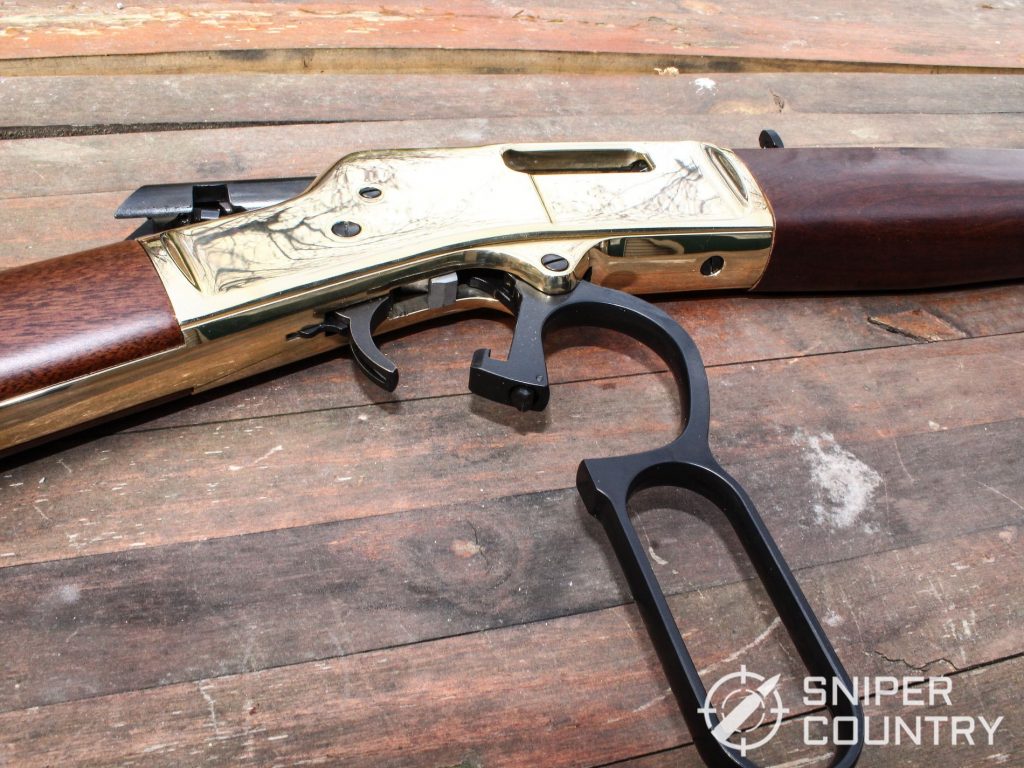
… and with action open. Note the quality of the bluing on the lever and bolt. Also, note the interesting tree limb reflections on the receiver – very highly polished, for sure!

Receiver top. The screws for a scope mount and the model/serial numbers are prominent.
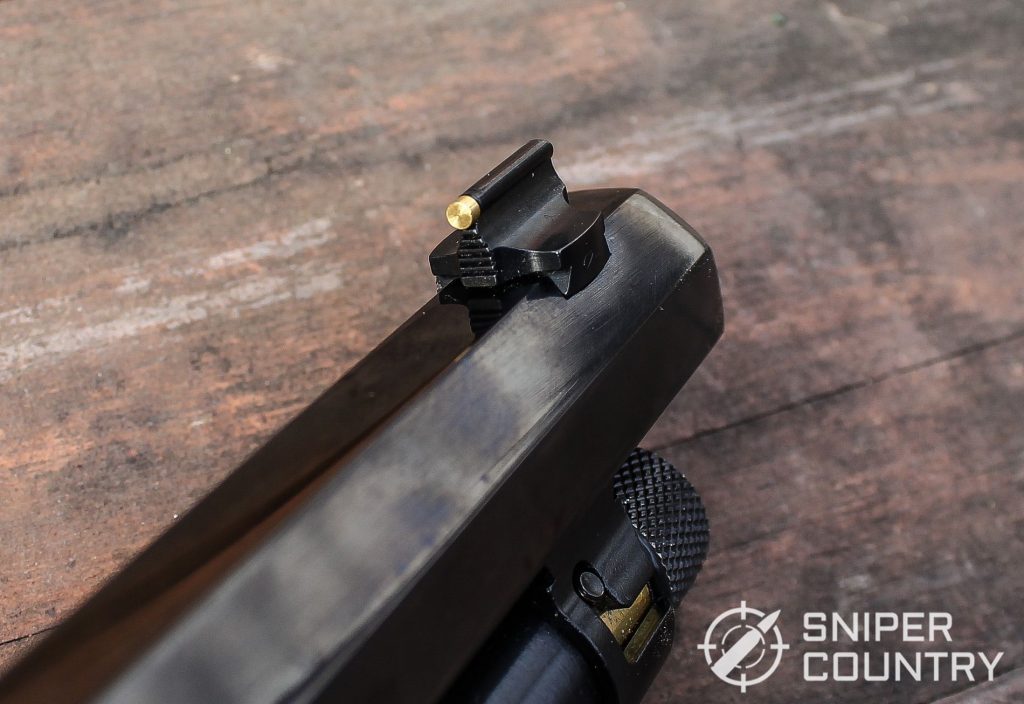
Front sight – note the brass bead. The sight is drift-adjustable.

Rear sight. Drift the base left or right and move the elevation ladder up to raise your impact point. Not visible is the diamond on the front of the sight which helps you fine-tune your aiming point. That insert is even adjustable.

Magazine tube removed.
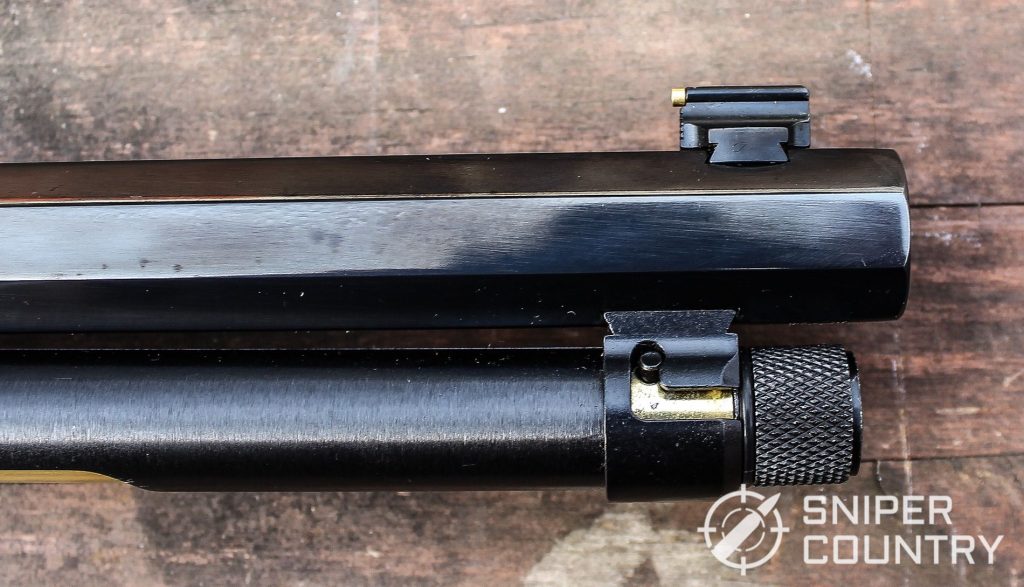
The magazine tube latch. It’s very positive.
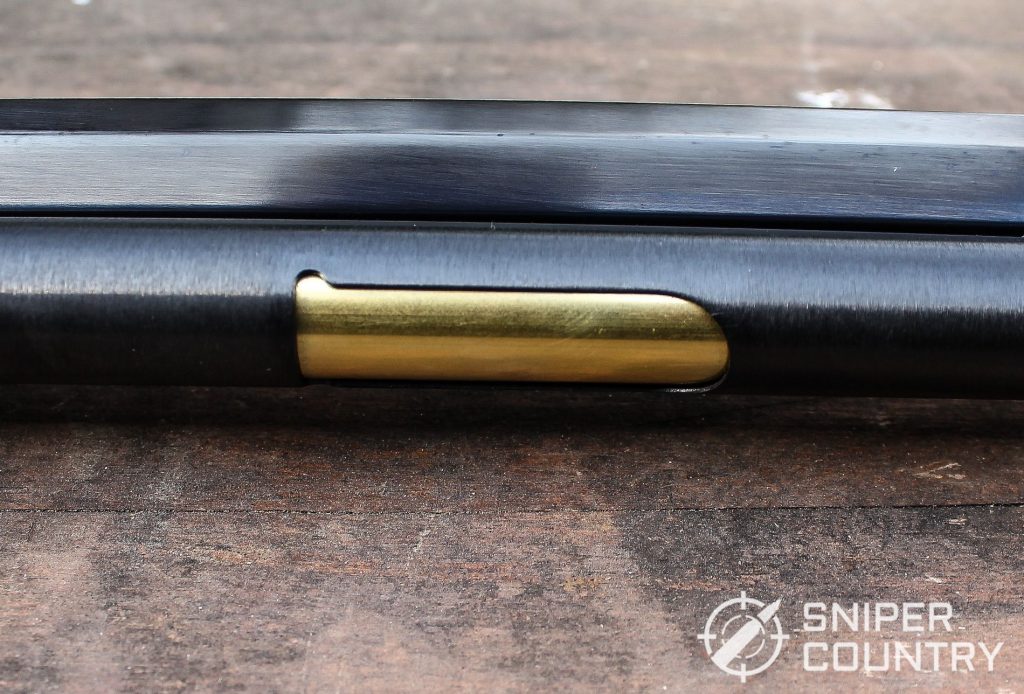
And, since there is no loading gate on the receiver, you drop the cartridges into this 44-magnum-cartridge-shaped slot… you can look at a Henry and all but tell what caliber it is just by the shape of this entry slot.
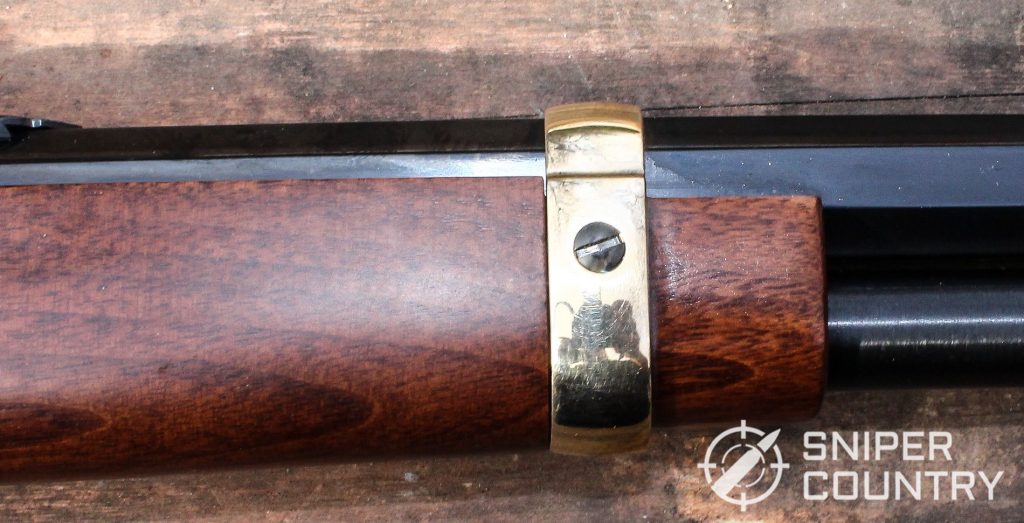
Brass barrel band with my reflection – talked about shiny!
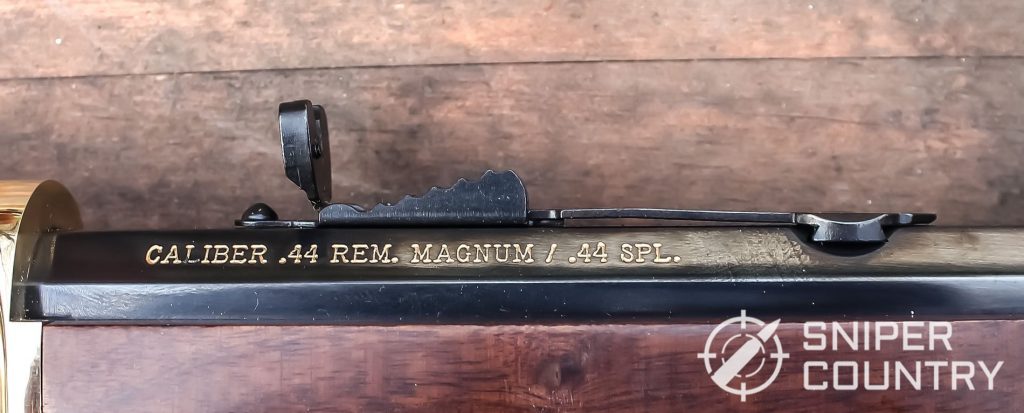
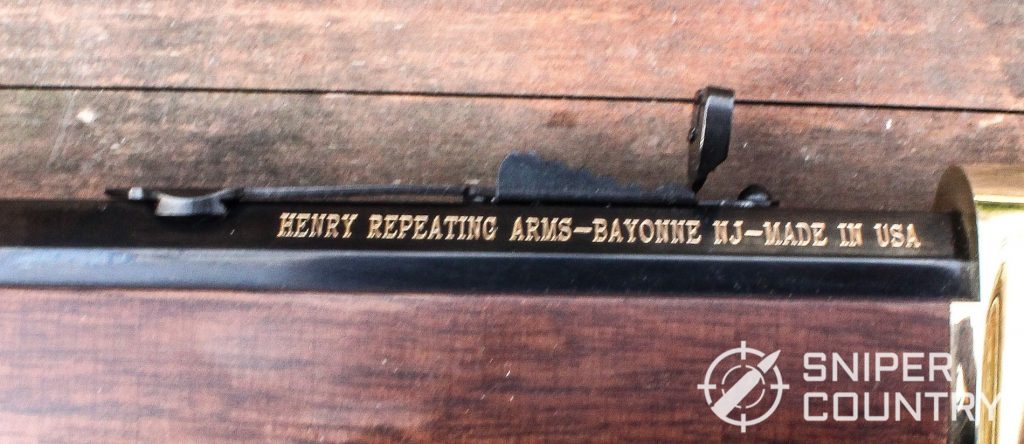
Both sides of the barrel, with engraving. Very tastefully done, in an appropriate typeface.
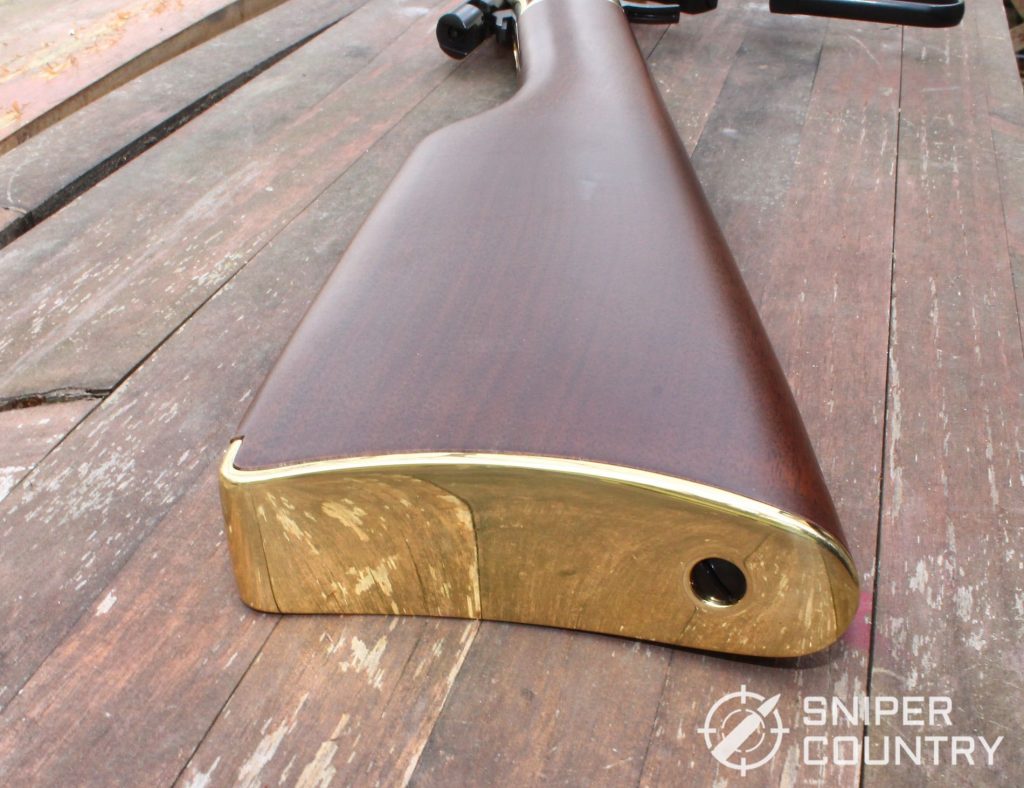
The caboose. Look at that mirror finish…
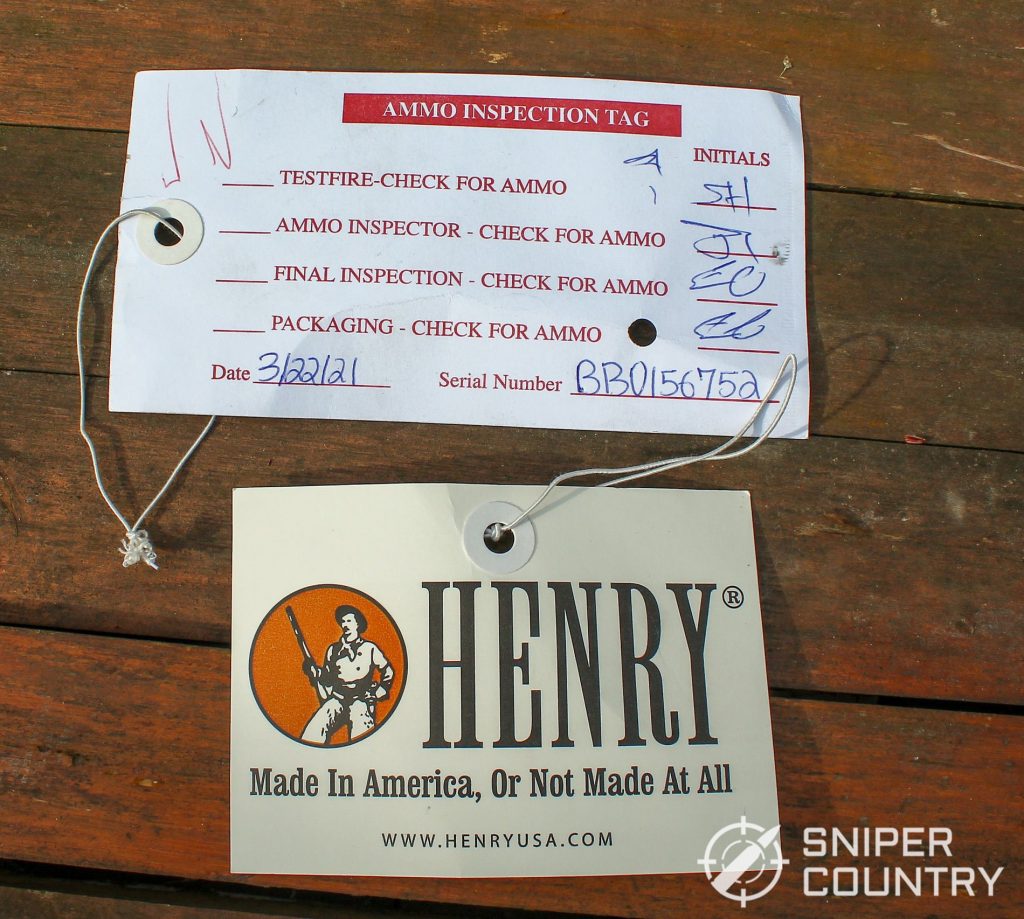
Hang tags – talk about inspections…
BONUS OFFER: Get your free shooting range targets to print at home!
Get your free targets to print at home!
Range Time with the Henry Big Boy
Shooting with 240-grain JHP
Like in every other review I’ve done (or will do for the foreseeable future), I bemoan the fact that I don’t have much ammo to shoot in my testing procedure. Let’s face it, I’m not exactly scientific when it comes to my testing process, but I have fun and hopefully you get whatever the idea is of what I’m trying to get across. Here it was no different. I had exactly 20 rounds of a CCI aluminum-cased .44 Magnum load that used a 240-grain JHP bullet…where I got those 20 rounds, I know not. I figured that it was good that I had them, at the very least.
Shooting with a handload of 7.1-grain Tite Group
The other load I shot was my handload of 7.1 grains of Tite Group (I know, that’s a fast powder but it usually works in this load) under one of my home-cast Lee 240-grain tumble lube powder-coated bullets. It didn’t do so well, but I will definitely work with it to get it zeroed in. This load shows 1066 f.p.s. out of my 8 ⅜†model 629.
I did not have a chance to run it over my chronograph but I would think it would be around 1500 f.p.s. out of the Henry’s 20-inch tube. That is definitely deer hunting material. These hard-cast bullets would go clean through a deer at under 50 yards, in my experience.
As for the factory load, I would be happy to experiment more with it. I did get two shots touching, which is a good start. I just don’t have any more than that original box of 20, so any experimentation will be with my handload for now.
Target Analysis
Notice the bullets struck pretty high on the target. The targets were about 30 yards out, and I was using a center hold. On the handload target, you’ll see two red ammo box stickers added at the bottom as an improvised aiming point. I had to do that since the Henry Big Boy was shooting high. The hole that’s circled was from my first time of shooting, before I added the “Xâ€. Here we have two shots touching (lower right) and one a bit high but centered. This is definitely “minute of deer†as the saying goes. I would get it to where all were in the orange, then I could reach out a bit further in the field with a better chance of success.
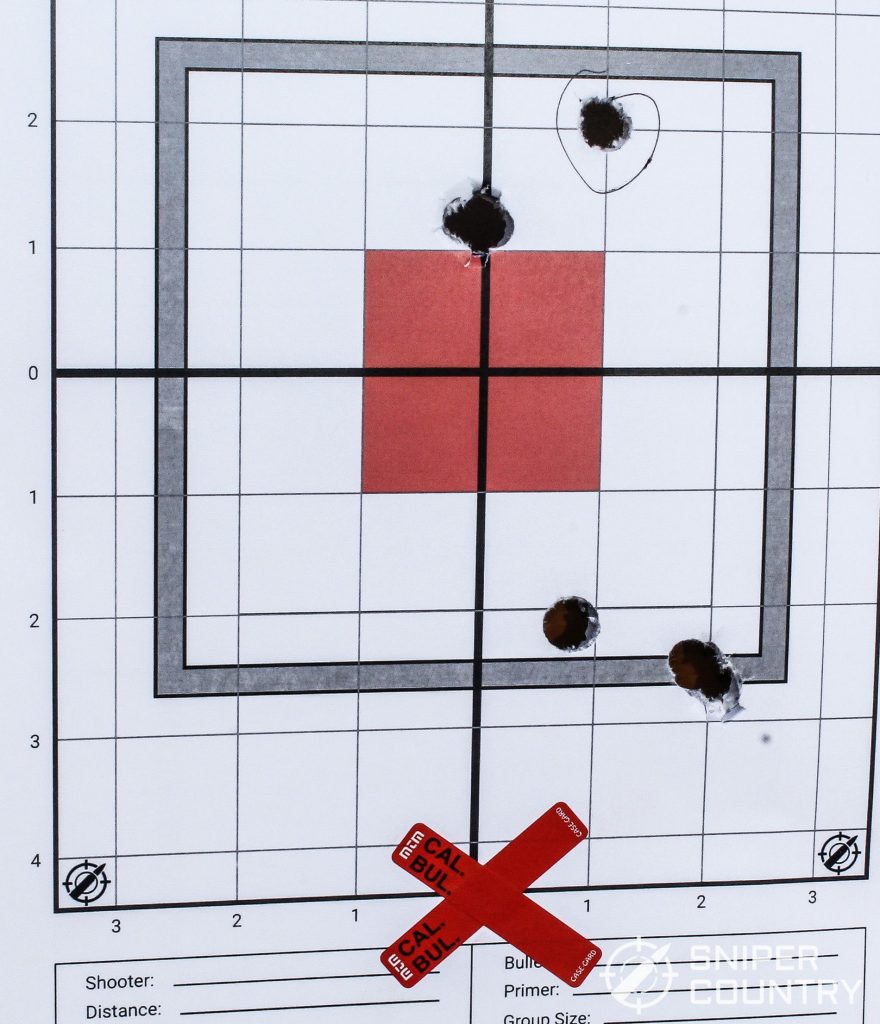
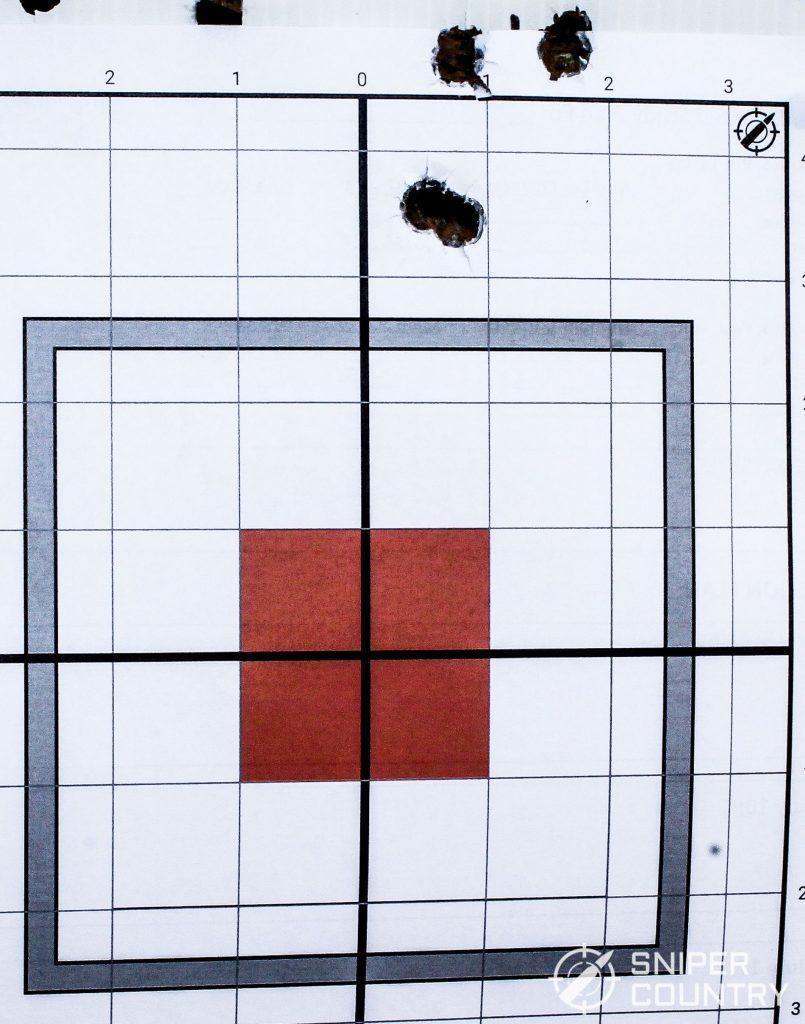
I was a bit apprehensive as I sat down at the bench in terms of recoil. I owned a Rossi R92 in .45 Colt once upon a time as I mentioned above, and my 260-grain deer loads really announced their departure from the muzzle with a goodly “whack†against your shoulder. This rifle was a bit more tame. It would kick more, of course, with heavier loads but if the goal is to take a buck or a doe out of circulation, most all the time that has been accomplished with mid-range loads at around 1100 f.p.s. You just don’t need “elephant loads” for deer, at least in my neck of the woods.
Add in the fact that this rifle weighs more than 8 pounds, and the recoil energy is soaked up more than a little. My main concern was seeing the sight. The way my glasses are, I have a tough time keeping open sights in focus. Keeping the brass front bead centered in the buckhorn rear, sitting on top of the white diamond is fairly difficult for me. At any rate, I got a few shots off and had fun doing so.
Hunting with the Henry?
One concern about hunting with this gun is the fact that it is real purty, as my cousin might say. Scratching or dinging that mirror-polished brass receiver or the fancy stock would be a distinct possibility as you work your way to or from your deer blind. You might want to remember that if you are thinking of getting one of these to hunt with. The blued receiver might still get scratched, but it might be easier to fix than the brass one. At any rate, the gun would make an excellent deer rifle – except for one thing. That one thing:

That mirror-finished, polished brass would be like a blinkin’ beacon if the sun were to catch it just right. I’ve seen deer bolt for less reason than this gun’s reflective qualities. Of course, you could always cover it up. It comes with a “sock†of sorts that slips over the receiver during shipping to protect it… you might be able to rig something similar that would hide the shine but not impede function. Even an easy-release tape might work. I would hesitate to take it into the field without covering it up with something, even on a cloudy day – you still want to protect it. Shooters tend to be pretty innovative – anyone out there come up with a way to mute the searchlight aspect of this brass?
Henry Big Boy in summary
The Henry lever rifle tends to be the standard against which similar guns are measured. Ever since the original .44 rimfire Henry made its debut on the battlefields of the Civil War, the lever action repeater has been popular. Think of it as the “tactical†rifle of its era – 10 or 12 shots in quick succession without having to reload, and quick into action. Easily wielded, the Henry lever rifle was and is still popular with hunters and anyone who values a quality firearm in their gun safe.
Something that I didn’t know until fairly recently, when I saw one on Duane’s rack, was that Henry makes lever action shotguns. He had gotten a .410 in, which didn’t last long. I got to thinking – if you are used to shooting lever guns, you would be just about as fast with the lever action as you would be with a pump gun. Plus, you have the Henry workmanship and quality in your hands.
A Henry on your shooting bench is a treat, and the Henry Big Boy is no exception. Although they are not cheap in terms of price, materials, fit, finish, etc., they will endure. I expect this Big Boy will outlast not only me, but probably also whichever of my sons ends up with it. It is built to last. Do you own one? Tell us below about your experiences with it. As always, keep ‘em in the black and stay safe!

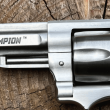



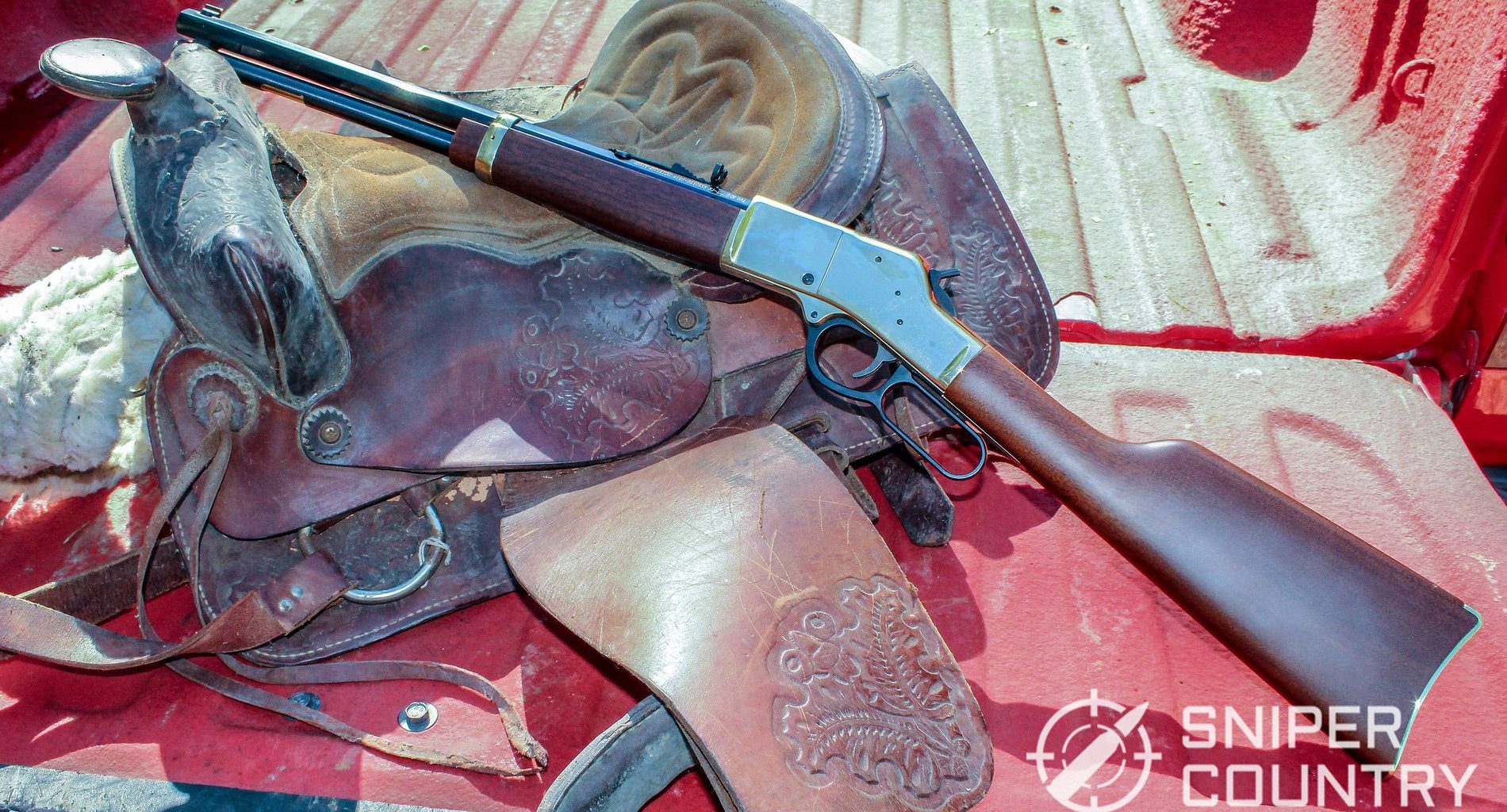
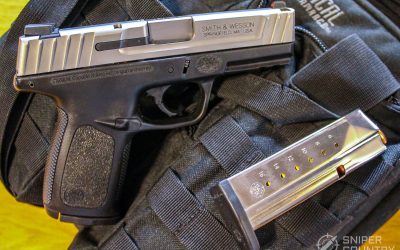

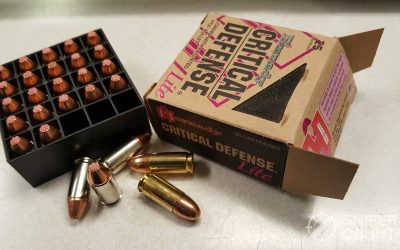
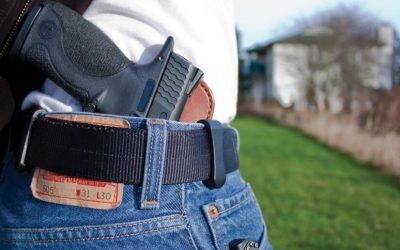
![9mm Glock Models [Ultimate Guide]](https://www.snipercountry.com/wp-content/uploads/2018/10/Glock-17-vs-Glock-19-vs-Glock-26-vs-Glock-41-vs-Glock-43-WM-400x250.jpg)
![Handgun Caliber Chart [2025 Ultimate Guide]](https://www.snipercountry.com/wp-content/uploads/2018/10/Handgun-Caliber-Comparison-400x250.jpg)
![Rifle Calibers [Ultimate Guide]](https://www.snipercountry.com/wp-content/uploads/2018/12/Header-1900-400x250.jpg)

